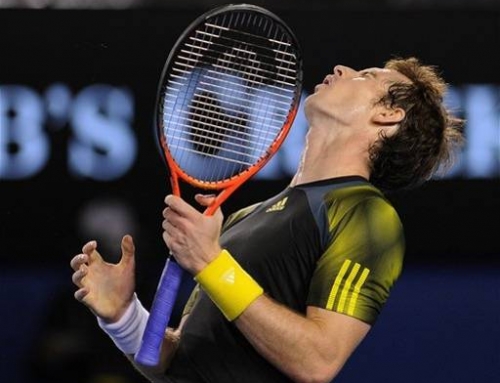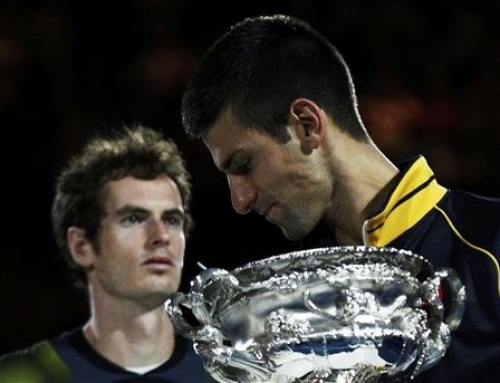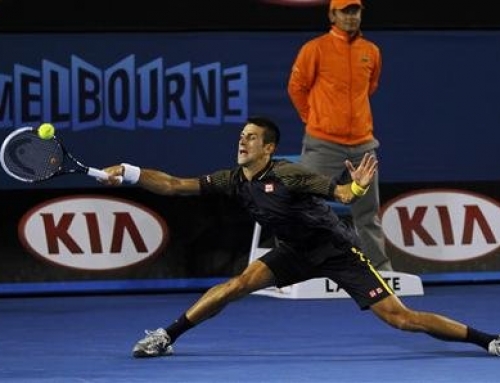 In another time, another world, Yonex would be salivating at this matchup, against former top 5 players, Lleyton Hewitt and David Nalbandian. Both decked head-to-toe with Yonex clothing, both playing with a Yonex stick. It must be how Nike feels when it sees yet another Federer-Nadal final.
In another time, another world, Yonex would be salivating at this matchup, against former top 5 players, Lleyton Hewitt and David Nalbandian. Both decked head-to-toe with Yonex clothing, both playing with a Yonex stick. It must be how Nike feels when it sees yet another Federer-Nadal final.
Nearly ten years ago, the two had met in a Wimbledon final, a lopsided affair with Hewitt winning his second (and last) Slam. Those were the days when both players felt they would be dominating the Slams. Little did they know that Federer and Nadal would soon eclipse them and run continuous circles.
Federer would say that David Nalbandian and Lleyton Hewitt made him a net-rusher, and it was his hours of practice that lead him to be the better baseliner until he could beat both at their own game. Nalbandian and Hewitt would share some of the same fate. Both would get injuries. Both would see their rankings slip. Both would see mini-resurgences.
Hewitt was able to reach the quarterfinals of Wimbledon in 2009 where he pushed Andy Roddick to 5 sets. Nalbandian would, without a healthy del Potro, try to win a Davis Cup for Argentina single-handedly. He played solid tennis to win Washington DC, then played a decent Toronto, losing to a pumped-up Murray, then faded some the rest of the year.
Both play a style of tennis that could be called post-Wilander. It was said, when the rush of Swedes hit the world throughout the 1980s that the best of them, Mats Wilander, modelled his game not after the iconclastic Swede, Bjorn Borg, but after the fiery American, Jimmy Connors. Wilander apparently popularized the move where he bends his wrist so his fingers face to his face, and it so compelled Hewitt that he made it his signature move after a big point.
The two aren’t the kind of howitzer hitters that Soderling is, not the aggressive shotmaker that Federer became, not the heavy spinning angle-creating player that Nadal is. They play a style that moves the ball around. A more brawny version of the style of tennis that a player like Wilander played, a style that was to become obsolete as Federer, then Nadal pushed the imaginations of what one could do with a racquet.
So, nine years later, the two would find themselves fighting in a first round match, rather than a final that they might have envisioned years ago. Nalbandian the 27th seed, Hewitt unseeded.
Hewitt took the advantage early on with a 2 set to 1 lead, but with one disturbing stat. Although he was getting plenty of chances to break, he wasn’t breaking.
Nalbandian looked to serve out the fourth set when Hewitt broke, took it to a tiebreak, only to see Nalbandian win the tiebreak easily. Nalbandian broke early, but Hewitt came back late. Hewitt even had a whiff of a match point before Nalbandian approached and put away a volley. All the crowd urgings weren’t enough in a match that lasted well past midnight. It might have gone later had not ex-Hewitt flame, Kim Clijsters, made short work of former number 1, Dinara Safina, in a 6-0, 6-0 blowout.
Nalbandian broke again and held to win the fifth set, 9-7. Up next for Nalbandian is the diminutive Richard Berankis of Lithuania, who was once a top junior, and has inched his ranking up over the past year. Berankis may have been fervently wishing for a long. long match, but more than likely, he was in bed, getting ready for a day of practice, and to find out who his second round opponent may be.
In the meanwhile, the crowd was thrilled and disappointed in a loss by their man Hewitt, who keeps fighting like it’s 2002.






![[Aussie Open Final] Can Andy Murray beat Novak Djokovic?](https://www.essentialtennis.com/wp-content/uploads/2013/01/20130126andy-500x383.jpg)
![[Day 13, Aussie Open] Bryan brothers win 13th Slam with Aussie doubles title, Kyrgios wins boys title](https://www.essentialtennis.com/wp-content/uploads/2013/01/20130125bryan-500x383.jpg)